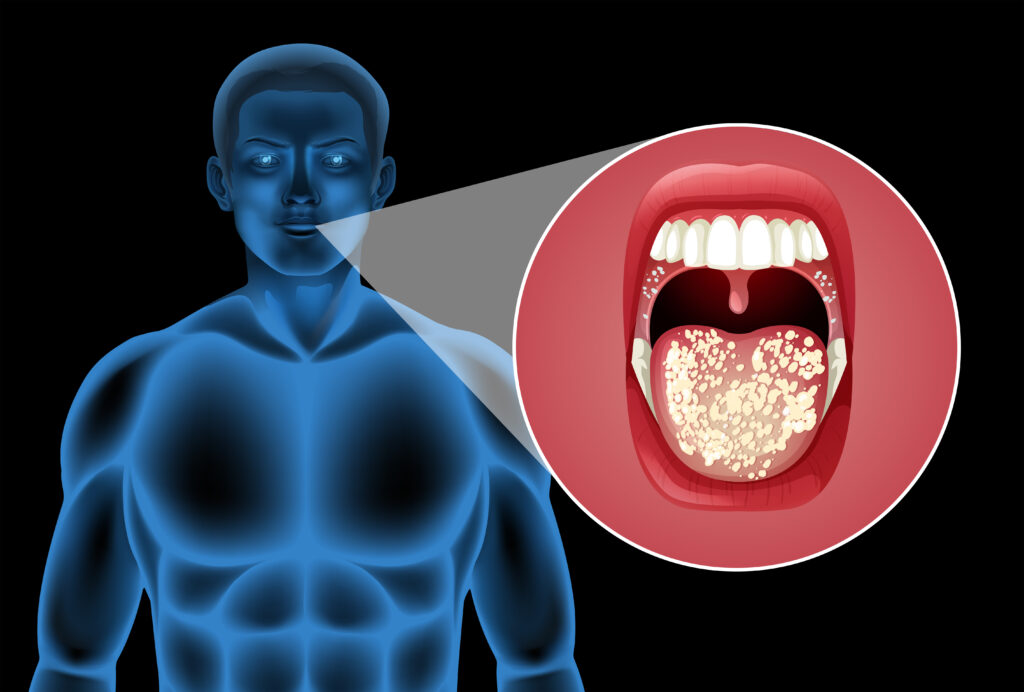Leukoplakia disease refers to the appearance of thickened, white patches that can develop in the mouth, commonly on the gums, inside the cheeks, and sometimes leukoplakia tongue. While these patches are generally harmless, some can show early signs of cancer. Hence, understanding leukoplakia is crucial. This guide aims to clear the fog around leukoplakia, helping you make informed decisions about your health. By shedding light on its symptoms, causes, and treatments, we hope to elevate your awareness and promote healthier living.
Decoding Leukoplakia: Symptoms, Causes, and Early Diagnosis
Before diving in, let’s understand what leukoplakia is. The definition of leukoplakia is simple: it’s a condition where white spots form in your mouth. It affects many people, with varying severity and outcomes.
Recognizing Oral Leukoplakia Symptoms
The signs can be subtle. Oral leukoplakia symptoms often start as white patches in the mouth. These patches can vary in size and can sometimes appear on the leukoplakia tongue. They are not usually painful but may become sore in certain cases. Red spots, changes in texture, or difficulty chewing could be signs that need attention.
Understanding the Causes of Leukoplakia
Several factors contribute to the development of leukoplakia. The most common is tobacco use. Whether it’s smoking or chewing tobacco, they are significant triggers. Another cause is alcohol consumption, especially if you drink heavily. But it doesn’t stop there. Other culprits include chronic irritation from dentures and genetics. Some individuals are more susceptible due to their genetic makeup. Lastly, poor oral hygiene and certain diets can also contribute.
The Importance of Early Diagnosis
Spotting leukoplakia symptoms early can prevent serious conditions like cancer. Regular dental check-ups are vital. Dentists can catch suspicious patches early on. Early intervention can improve outcomes significantly. Thus, if you notice unusual mouth changes, see a healthcare professional quickly.
Managing Leukoplakia: From Home Care to Cessation Support
Living with leukoplakia disease is manageable through various approaches. For those seeking a cure for leukoplakia, focusing on symptom management and lifestyle changes is crucial.
Home-Based Care and Dietary Tips
Here are some practical ways to manage leukoplakia at home:
- Maintain good oral hygiene by brushing twice daily and flossing.
- Use mouthwash to help reduce bacteria build-up.
- Consume a balanced diet rich in fruits and vegetables. Vitamin A-rich foods can be beneficial.
- Stay hydrated by drinking plenty of water.
The Role of Tobacco in Leukoplakia
Tobacco is the main enemy in managing leukoplakia disease. Smoking or chewing tobacco can worsen the condition. Quitting smoking is vital. Here are some steps:
- Identify your triggers to understand when you’re most likely to smoke.
- Gradually reduce tobacco use instead of quitting cold turkey.
- Seek professional help if needed. Nicotine replacement therapies can be effective.
Cessation Support Systems in India
In India, many resources support those wishing to quit tobacco:
- National Tobacco Quitline is available for guidance.
- Local support groups offer motivation and community.
- Participate in national campaigns for further support.
The Importance of Dental Hygiene and Routine Check-ups
To prevent leukoplakia, maintaining oral health is paramount. Regular dental visits help catch early signs of oral leukoplakia tongue and other areas. These check-ups should not be postponed.
Breaking Myths: The Truth About Leukoplakia
Many misconceptions surround leukoplakia disease:
Debunking Common Myths
- Leukoplakia is not always cancerous. Most cases are benign but monitoring is key.
- Only smokers get it. This is false; non-smokers can also experience it.
The Psychological Impact of Loving with Leukoplakia
- Living with oral leukoplakia symptoms can cause anxiety. Support is important.
- Talk to a mental health professional if you’re feeling overwhelmed. Sharing experiences in support groups helps too.
Advancements and Societal Factors in Leukoplakia Treatment
Treatment Advancements
Research is ongoing to find better treatments. Technologies like laser therapy show promise. Medications continue to improve, offering hope for those affected.
Societal Factors Impacting Prevalence
Socioeconomic status often influences leukoplakia cases. In India, access to resources can be uneven. People in rural areas might struggle with less access to healthcare. Raising awareness at the community level can bridge these gaps.
Encouragement for Community Awareness
Community education is crucial. Promoting awareness helps early detection and treatment. Encourage proactive health measures like regular check-ups and avoiding risk factors. By doing so, we can effectively reduce leukoplakia disease prevalence.
By educating ourselves and others, we contribute to better health outcomes for all. Stay informed, stay healthy!


